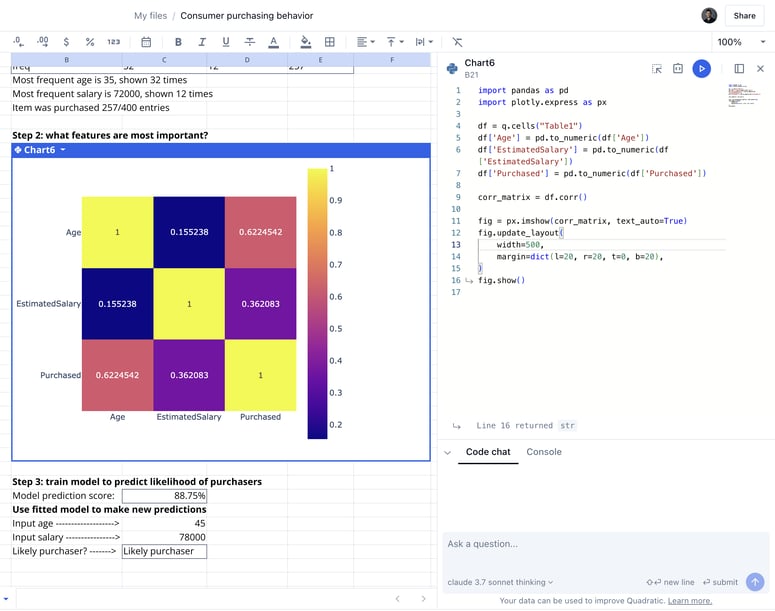This is a Plain English Papers summary of a research paper called TextGrad: Automatic Differentiation via Text. If you like these kinds of analysis, you should subscribe to the AImodels.fyi newsletter or follow me on Twitter.
Overview
- This paper introduces "TextGrad," a novel approach for optimizing AI systems by backpropagating text feedback.
- The key idea is to treat text as a differentiable signal that can be used to provide gradients for updating the parameters of language models and other AI systems.
- The authors demonstrate the effectiveness of TextGrad on various tasks, including language model fine-tuning, style transfer, and text generation.
Plain English Explanation
The paper presents a new technique called "TextGrad" that allows AI systems to be trained more effectively using text-based feedback. Traditionally, training AI models like large language models involves providing them with labeled data and having them learn to predict the correct outputs.
With TextGrad, the AI system can instead be trained by receiving natural language feedback, such as a human-written description of how the system should behave. The key insight is that this text feedback can be treated as a differentiable signal, meaning the AI can use it to directly update its own parameters through a process called backpropagation.
This is akin to a human learning a new task by receiving ongoing verbal guidance and feedback, rather than just being shown examples. The authors demonstrate that this approach can lead to significant performance improvements on a variety of language-based AI tasks, including text generation, style transfer, and fine-tuning large language models.
Technical Explanation
The core innovation of the "TextGrad" approach is treating natural language feedback as a differentiable signal that can be used to directly update the parameters of an AI system through backpropagation. Traditionally, training language models and other AI systems involves providing them with labeled data and having them learn to predict the correct outputs.
In contrast, the TextGrad method allows the AI system to be trained using free-form text feedback. This feedback is first encoded into a numerical representation that can be differentiated with respect to the model's parameters. The resulting gradients are then used to update the model, allowing it to directly optimize its behavior based on the text-based guidance.
The authors demonstrate the effectiveness of TextGrad on a range of language-based tasks. For example, they show how it can be used to fine-tune a large language model to better match a desired writing style or persona. They also explore using TextGrad for open-ended text generation, allowing a model to iteratively refine its outputs based on human feedback.
Overall, the key contribution of this work is introducing a general-purpose technique for incorporating text-based supervision into the training of AI systems. By treating language as a differentiable signal, the authors have opened up new possibilities for interactive and user-guided machine learning.
Critical Analysis
The TextGrad approach represents an intriguing step forward in making AI systems more responsive to human feedback and preferences. By allowing language to directly shape the optimization process, it offers a more intuitive and flexible training paradigm compared to traditional supervised learning.
However, the paper does not delve deeply into potential limitations or challenges. For example, it's unclear how well TextGrad would scale to large, open-ended language models or handle noisy or ambiguous text feedback. There are also open questions about the stability and convergence properties of the optimization process when using text gradients.
Additionally, the authors do not explore potential ethical implications or risks of this technology. Allowing AI systems to be shaped by unconstrained text feedback could potentially lead to unintended or harmful behaviors, especially if the feedback comes from biased or adversarial sources.
Further research is needed to better understand the broader implications of treating language as a differentiable signal for machine learning. Careful consideration of safety, robustness, and alignment with human values will be crucial as this line of work progresses.
Conclusion
The "TextGrad" approach introduced in this paper represents an exciting advance in the field of interactive machine learning. By treating natural language feedback as a differentiable signal, it enables AI systems to be trained and optimized in a more intuitive, user-guided manner.
The authors demonstrate the potential of this technique across a variety of language-based tasks, showing how it can lead to significant performance improvements. This work opens up new possibilities for AI systems that can flexibly adapt to human preferences and refinements, rather than being constrained to predetermined objectives.
As the field of AI continues to evolve, techniques like TextGrad will likely play an increasingly important role in bridging the gap between human-centric and machine-centric intelligence. However, further research is needed to fully understand the limitations, risks, and ethical implications of this approach. Nonetheless, this paper represents an important step forward in making AI systems more responsive, interactive, and aligned with human values.
If you enjoyed this summary, consider subscribing to the AImodels.fyi newsletter or following me on Twitter for more AI and machine learning content.









Top comments (0)